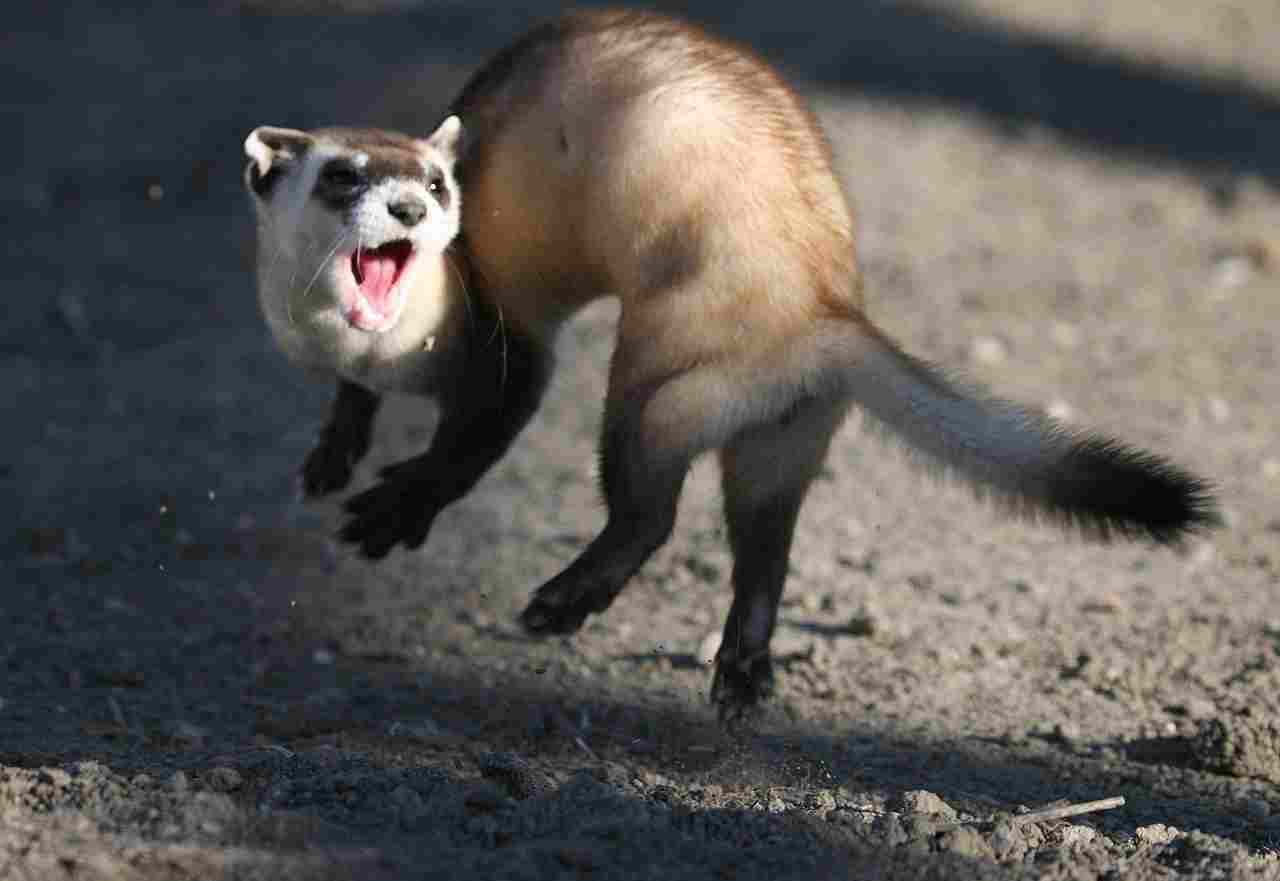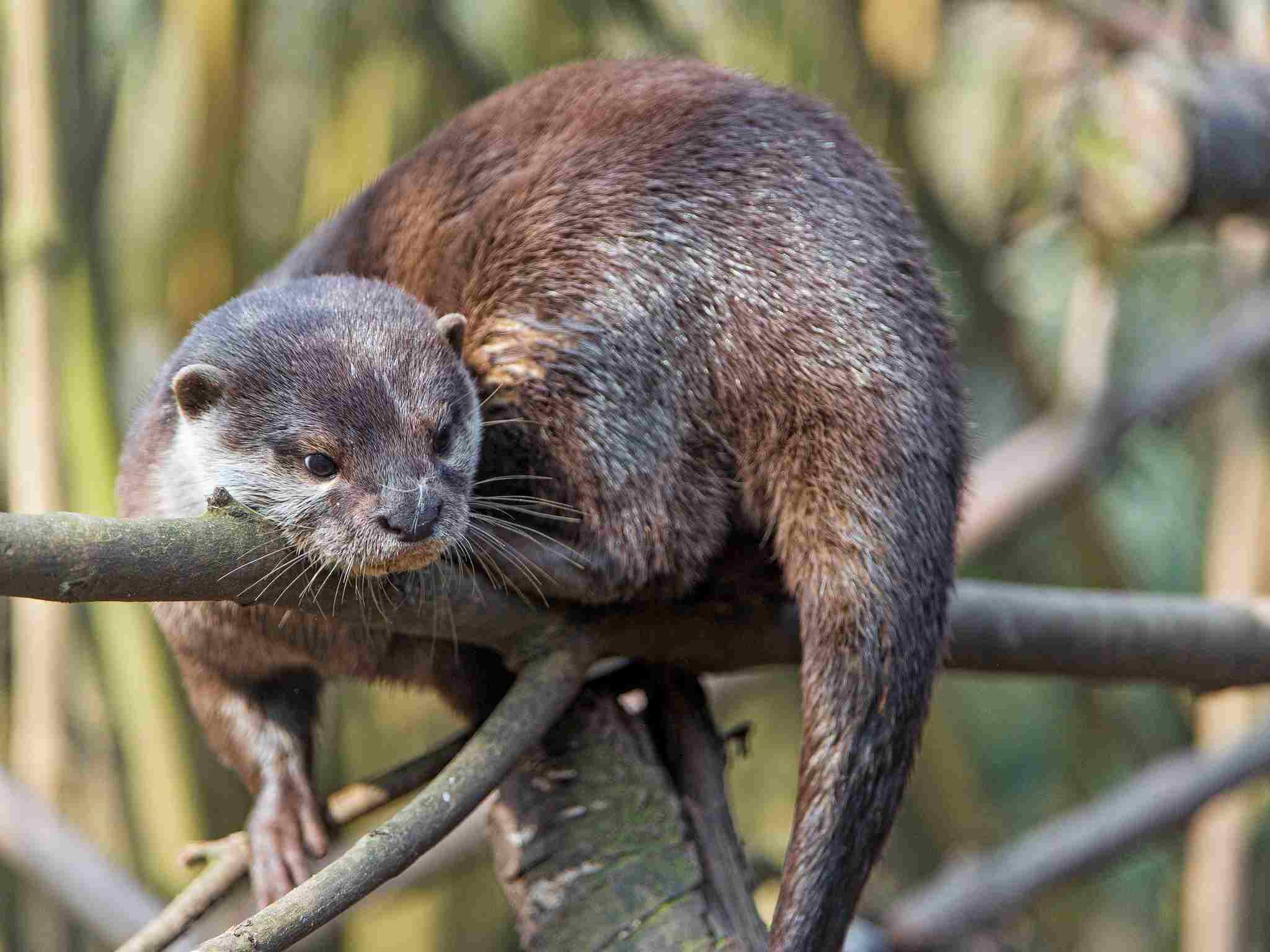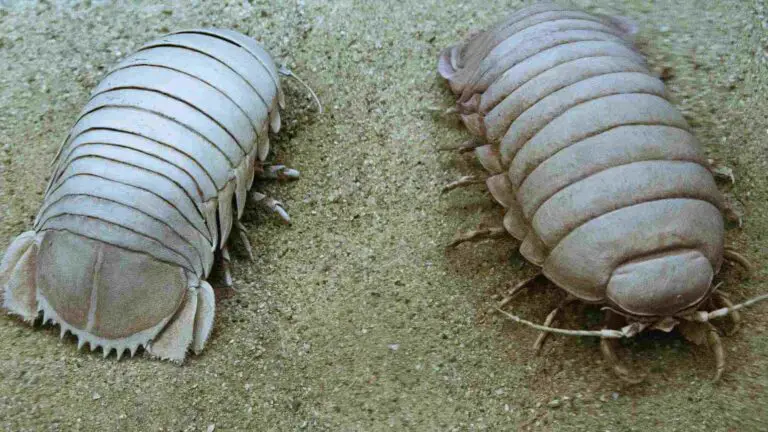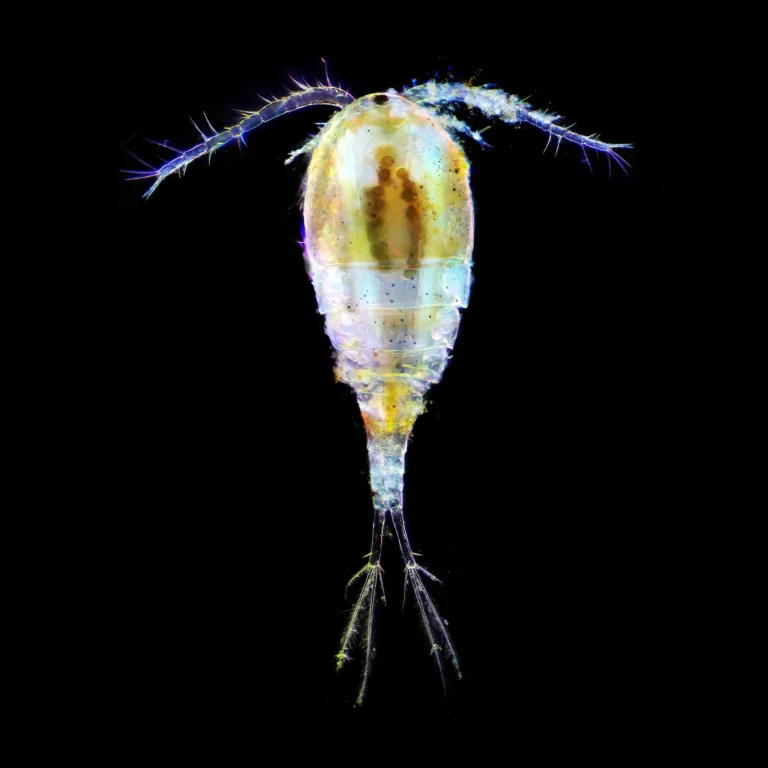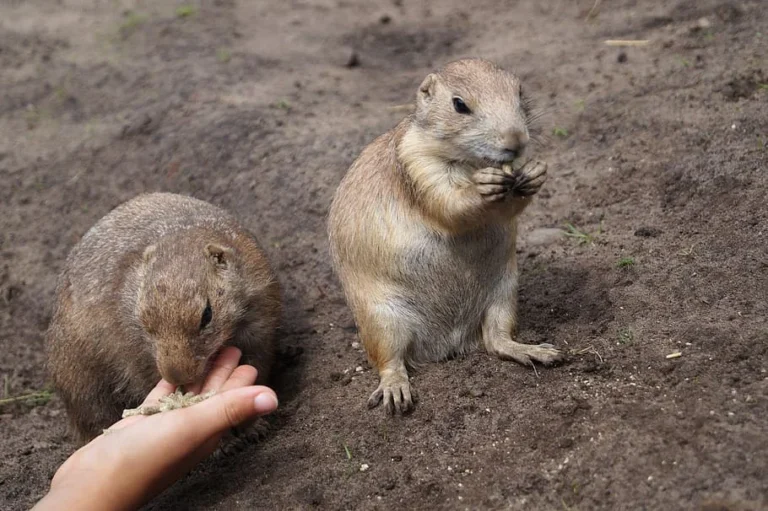Stoat Vs Mink Pictures, Differences and Similarities Discussed
In examining a potential encounter between a stoat and a mink, we explore the shared and distinct characteristics of these small carnivores. Notably, the mink’s larger and heavier build positions it as the likely victor in a physical confrontation. This analysis highlights the inherent physical differences between stoats and minks, emphasizing the advantages that contribute to the potential dominance of a mink over a stoat in a fight.
Stoat vs Mink: Assessing Differences and Predicting Outcomes
In a potential face-off between a stoat and a mink, the outcome is influenced by their shared mustelid traits and the discernible differences that set them apart. The larger and heavier build of the mink becomes a decisive factor, positioning it as the likely winner in a physical confrontation.
I). Mink’s Larger and Heavier Build:
– Minks, members of the mustelid family, are generally larger and heavier than stoats. This size advantage contributes significantly to the mink’s potential dominance in a physical confrontation.
II). Stoat’s Characteristics:
– Stoats, also known as short-tailed weasels, exhibit slender bodies, short legs, and a distinctive coat that changes color with the seasons. The stoat’s smaller size is a key factor in understanding potential interactions with minks.
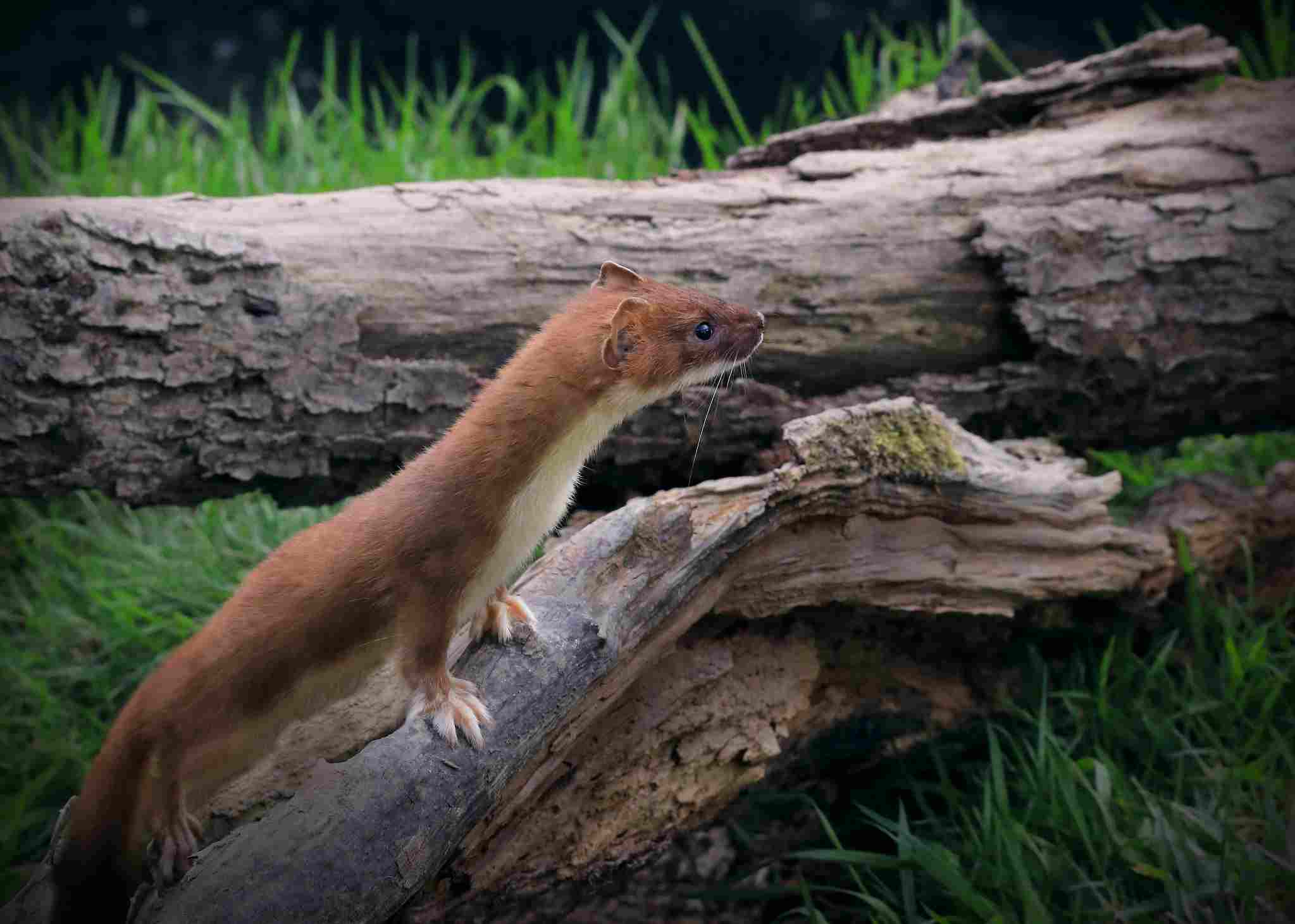
III). Mink’s Characteristics:
– Minks share mustelid traits with stoats but are typically larger and heavier. One notable difference is the lack of a seasonal color change in minks, as their fur remains consistent throughout the year.
IV). Lack of Seasonal Color Change:
– Unlike stoats, which undergo a seasonal color change in their fur, minks maintain a consistent coloration throughout the year. This lack of color change is a distinctive feature of minks.
V). Predicting Outcomes:
– In a physical confrontation, the mink’s larger and heavier build positions it as the likely victor over a stoat. The size advantage contributes to the mink’s strength and potential dominance in such encounters.
VI). Real-World Observations:
– Real-world interactions between stoats and minks can be influenced by various factors, including territorial behavior, adaptability, and individual differences. However, the inherent size advantage of the mink remains a key factor in predicting outcomes.
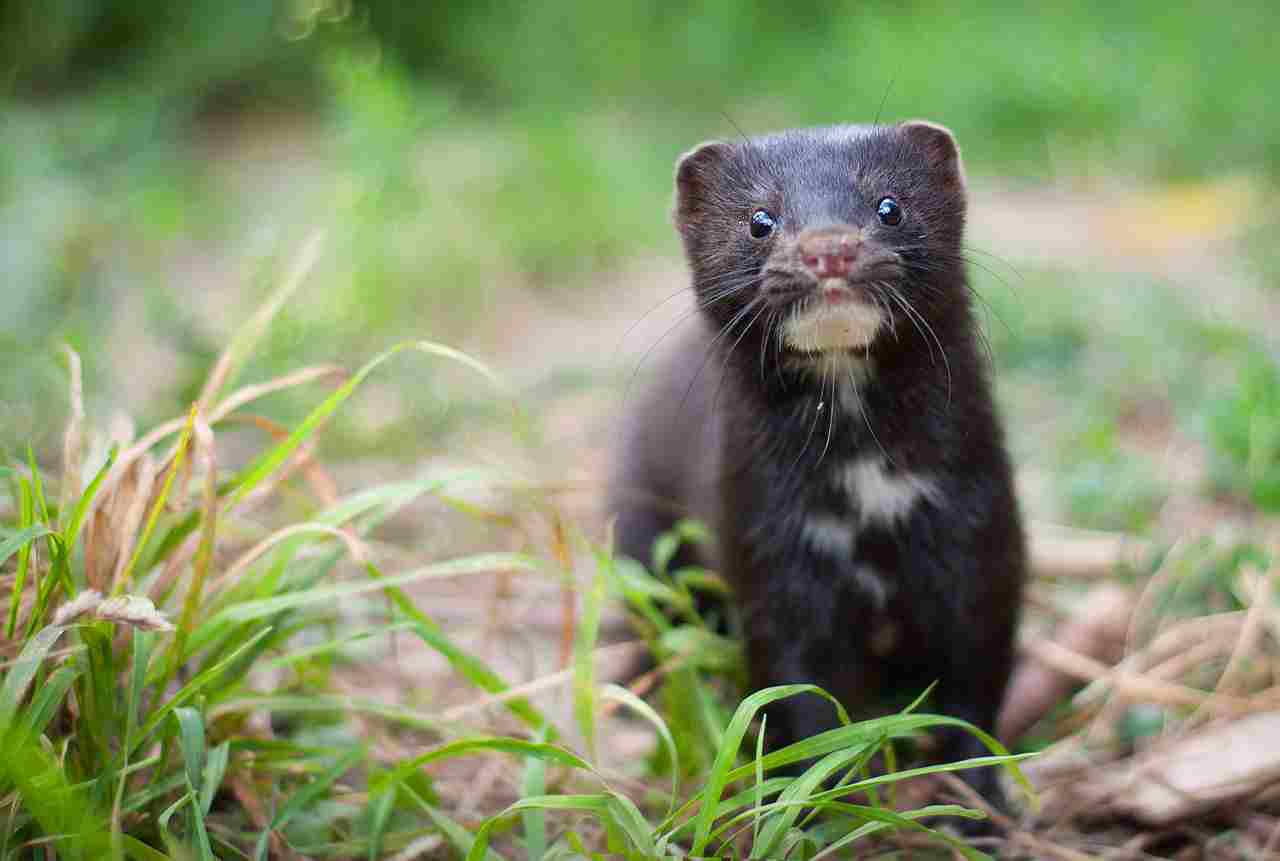
VII). Overall Dynamics:
– In this examination, the mink’s larger and heavier build, coupled with its lack of a seasonal color change, establishes it as the likely winner in a fight against a stoat. While both share mustelid traits, the physical differences contribute to the nuanced dynamics within the mustelid family, where size advantages play a crucial role in potential confrontations.
*Details of Comparison
| Criteria | Stoat | Mink |
| Taxonomy | Mustela erminea | Neovison vison |
| Appearance | Color-changing fur, black-tipped tail |
Thick, glossy fur, slightly flattened head
|
| Size | 17-33 cm (body) | 32-71 cm (body) |
| Weight | 85-370 grams |
450-1,580 grams
|
| Bite Force (PSI) | Limited information |
Estimated around 400 PSI
|
| Physical Offensive Advantages | Speed, agility, sharp claws, and teeth |
Strong bite force, swimming ability
|
| Physical Defensive Advantages | Agility, musky odor emission |
Claws, teeth, musky odor when threatened
|
| Speed | Up to 40 km/h (25 mph) |
Land speed not well-documented, agile swimmers
|
| Agility | Highly agile on land |
Agile both on land and in water
|
| Senses | Keen sense of smell, hearing, good low-light vision |
Well-developed sense of smell, good vision in and out of water
|
| Overall Physical Capacity | Terrestrial agility and adaptability |
Versatility in both terrestrial and aquatic environments
|
| Habitat Preference(s) | Diverse habitats including forests, grasslands, tundra |
Near water bodies such as rivers, lakes, marshes
|
| Tracks | Small tracks with distinct claw marks |
Paw prints near water sources
|
| Lifespan | 1-3 years | 3-10 years |
| Mode of Feeding | Carnivorous, preying on small mammals, birds, insects |
Carnivorous, diet includes fish, amphibians, small mammals
|
| Intelligence | Clever hunting strategies, adaptability |
Problem-solving skills, especially in aquatic hunting
|
| Social Behavior | Generally solitary |
Solitary but may share territories
|
| Mode of Reproduction | Polygamous mating, short gestation |
Polygamous mating, short gestation
|
| Parental Behavior | Maternal care, teaching hunting skills |
Similar maternal care, prolonged period before independence
|
| Proximity to Human-Inhabited Areas | Adaptable but prefer natural habitats |
May be found close to human settlements, especially near water
|
| Behavior Toward Humans | Generally elusive, may approach when searching for food |
Tolerant, may approach in certain situations, especially near water
|
| Danger Posed to Humans | Generally not considered dangerous, rare instances of bites if threatened |
Generally not considered dangerous, rare instances of bites if threatened
|
| Associated Precautions | Caution advised, avoiding unnecessary interactions, promoting awareness |
Caution advised, avoiding unnecessary interactions, promoting awareness
|
| Conservation Status | Conservation status varies regionally |
Listed as Least Concern, potential concerns with escaped farmed individuals
|
| Conclusion | Similarities: Belong to family Mustelidae, polygamous mating, maternal care. |
Differences: Habitat preferences, conservation statuses, potential ecological impacts from escaped farmed individuals.
|
1. Taxonomy
Stoat (Mustela erminea):
Kingdom: Animalia
Phylum: Chordata
Class: Mammalia
Order: Carnivora
Family: Mustelidae
Genus: Mustela
Species: M. erminea
Mink (Neovison vison):
Kingdom: Animalia
Phylum: Chordata
Class: Mammalia
Order: Carnivora
Family: Mustelidae
Genus: Neovison
Species: N. vison
2. Appearance
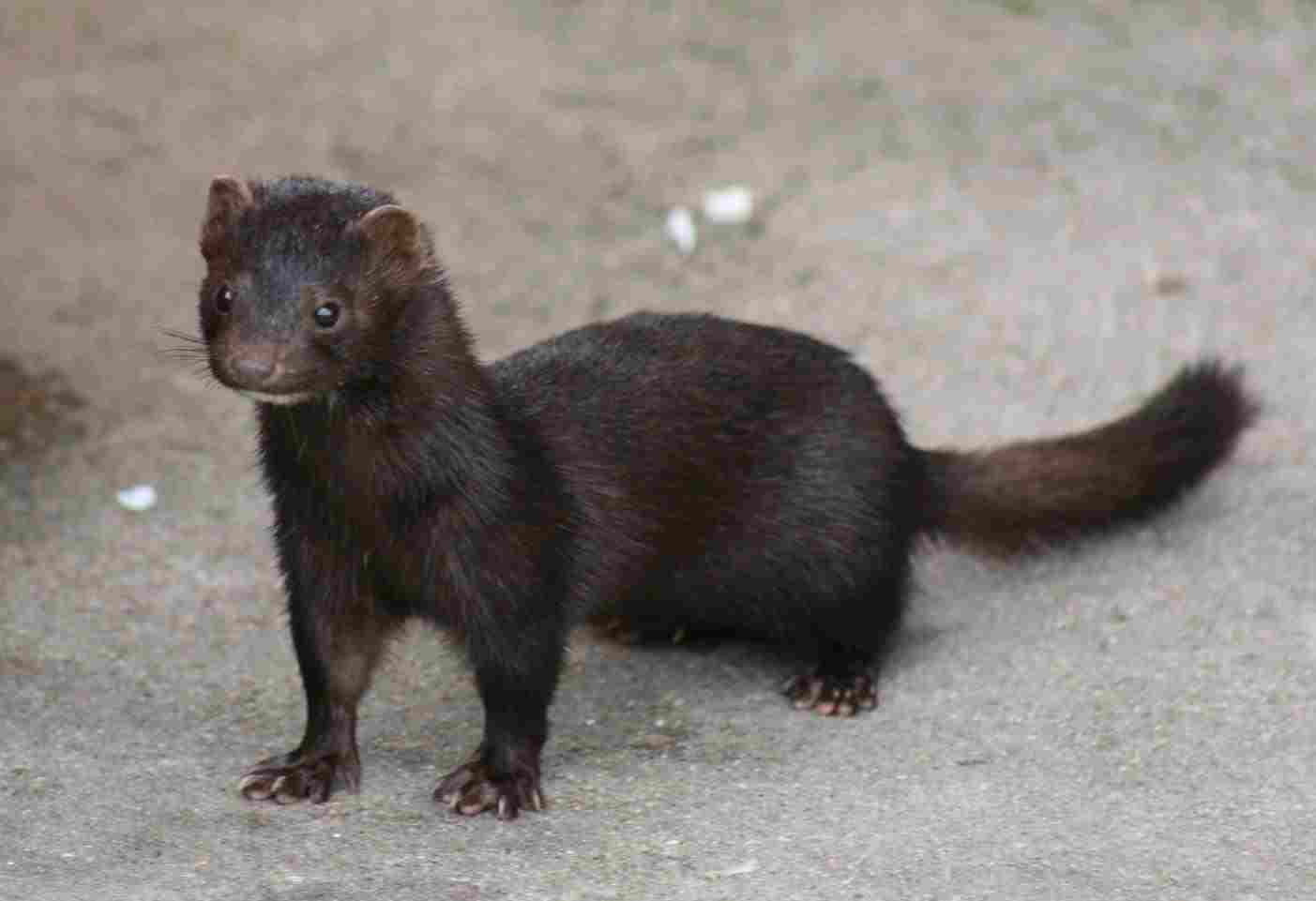
Stoat:
Sleek, slender body with a distinctive coat changing color seasonally (brown in summer, white in winter).
Black-tipped tail, small rounded ears, and a pointed snout.
Mink:
Compact and elongated body covered in thick, glossy fur.
Typically brown in color with a slightly flattened head and small, rounded ears.
Comparison:
Stoats are known for their color-changing fur, adapting to their surroundings for camouflage.
Minks have a more consistent fur color, providing insulation in aquatic environments.
Ecological Implications:
Stoat camouflage aids in hunting in diverse habitats.
Mink fur is well-suited for aquatic life, as they are skilled swimmers.
3. Size
Stoat:
Length: 17-33 cm (body), 7-12 cm (tail)
Mink:
Length: 32-71 cm (body), 20-27 cm (tail)
Comparison:
Stoats are smaller, making them agile and able to access various burrows.
Minks have a larger body size, aiding in swimming and diving.
Ecological Implications:
Stoats can navigate through smaller spaces in their pursuit of prey.
Mink size contributes to their ability to capture a variety of prey in aquatic environments.
4. Weight
Stoat:
85-370 grams
Mink:
450-1,580 grams
Comparison:
Stoats are significantly lighter, enhancing their agility.
Minks have a higher weight, assisting in diving and swimming.
Ecological Implications:
Stoat agility aids in hunting and avoiding predators.
Mink weight contributes to their ability to move and hunt underwater.
5. Bite Force (PSI)
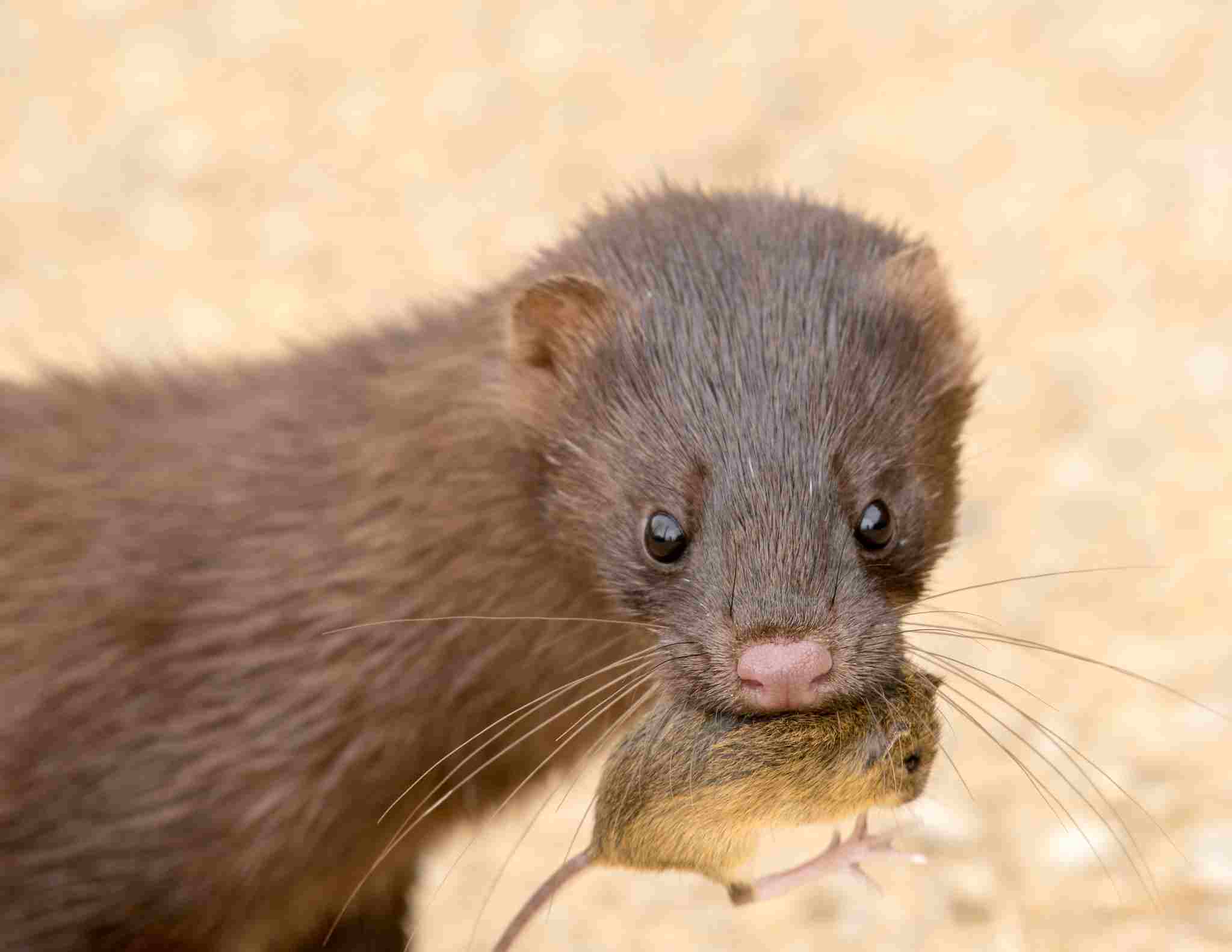
Stoat:
Information on exact bite force is limited.
Mink:
Estimated around 150 PSI
Comparison:
Limited data on stoat bite force, emphasizing other hunting strategies.
Minks possess a substantial bite force, crucial for capturing and subduing prey.
Ecological Implications:
Mink bite force is adapted for hunting in aquatic environments, securing prey like fish and crustaceans.
6. Physical Offensive Advantages
Stoat:
Remarkable speed and agility for ambushing prey.
Sharp claws and teeth for efficient hunting.
Mink:
Strong bite force for subduing prey.
Excellent swimming ability for capturing aquatic prey.
Comparison:
Stoats rely on speed and ambush tactics for offense.
Minks utilize a powerful bite force and swimming prowess.
Ecological Implications:
Stoats excel in terrestrial environments, hunting a variety of small mammals.
Minks are adapted for hunting aquatic prey, utilizing their strong bite and swimming skills.
7. Physical Defensive Advantages
Stoat:
Agility and speed for evading predators.
Can emit a musky odor as a defensive mechanism.
Mink:
Sharp claws and teeth for self-defense.
May emit a musky odor when threatened.
Comparison:
Stoats rely on agility and speed to escape predators.
Minks use their physical attributes and defensive behaviors for protection.
Ecological Implications:
Stoats’ defensive mechanisms help them avoid larger predators.
Minks use their physical defenses to protect against potential threats in both terrestrial and aquatic environments.
8. Speed (Km/hour or Mile/hour)
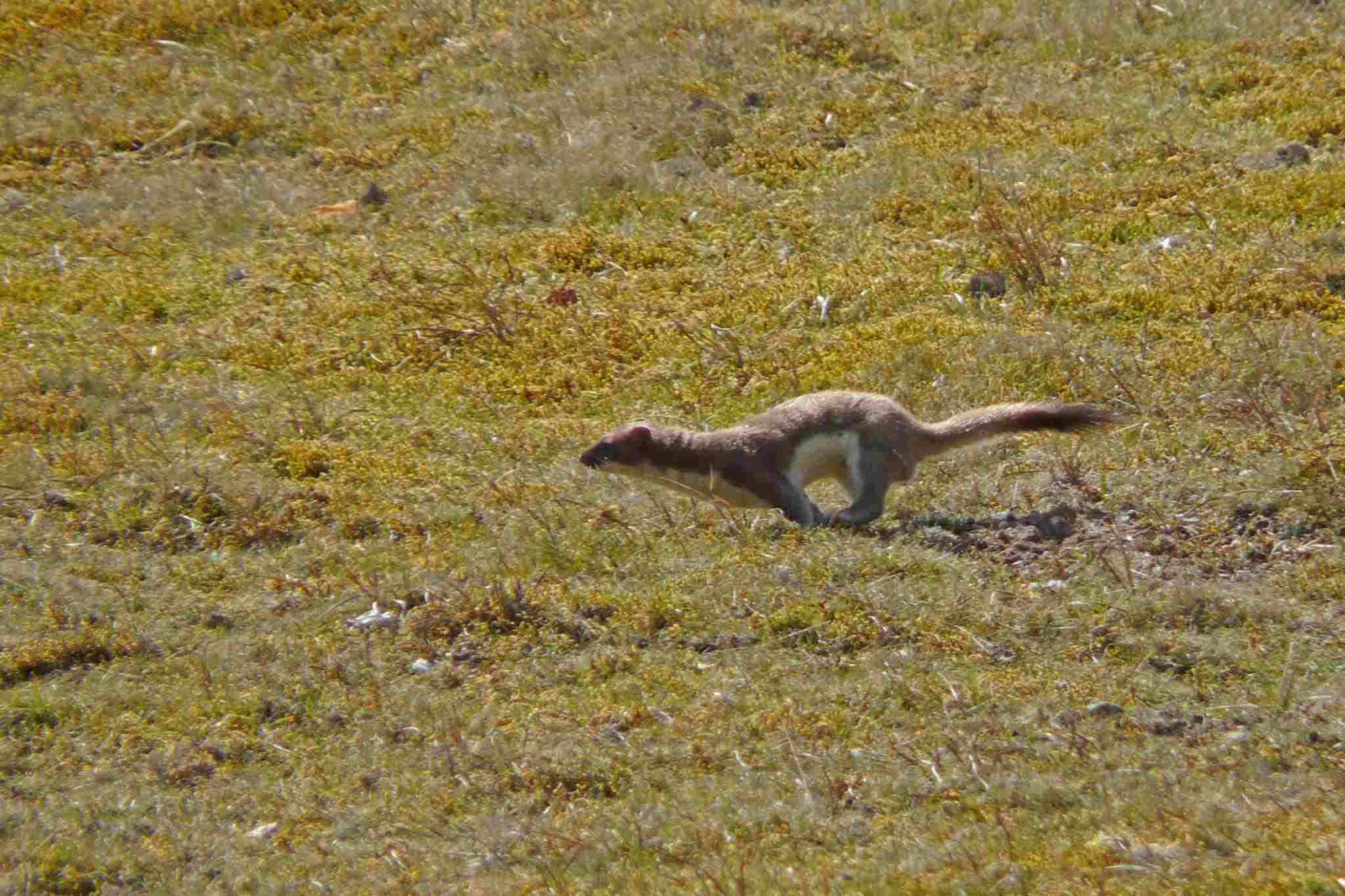
Stoat:
Can reach speeds up to 40 km/h (20-25 mph).
Mink:
Agile swimmers, but land speed is not well-documented.
Comparison:
Stoats demonstrate impressive land speed for hunting.
Minks showcase remarkable agility in the water.
Ecological Implications:
Stoats utilize speed for pursuing prey on land.
Minks’ agility in water is crucial for hunting and escaping predators.
9. Agility
Stoat:
Highly agile, capable of navigating through dense vegetation and burrows.
Mink:
Agile both on land and in water, known for swift underwater movements.
Comparison:
Stoats showcase agility in terrestrial environments.
Minks display versatility in both terrestrial and aquatic agility.
Ecological Implications:
Stoats’ agility aids in pursuing and capturing prey in various habitats.
Minks’ agility is essential for hunting underwater prey and evading predators in aquatic environments.
10. Senses
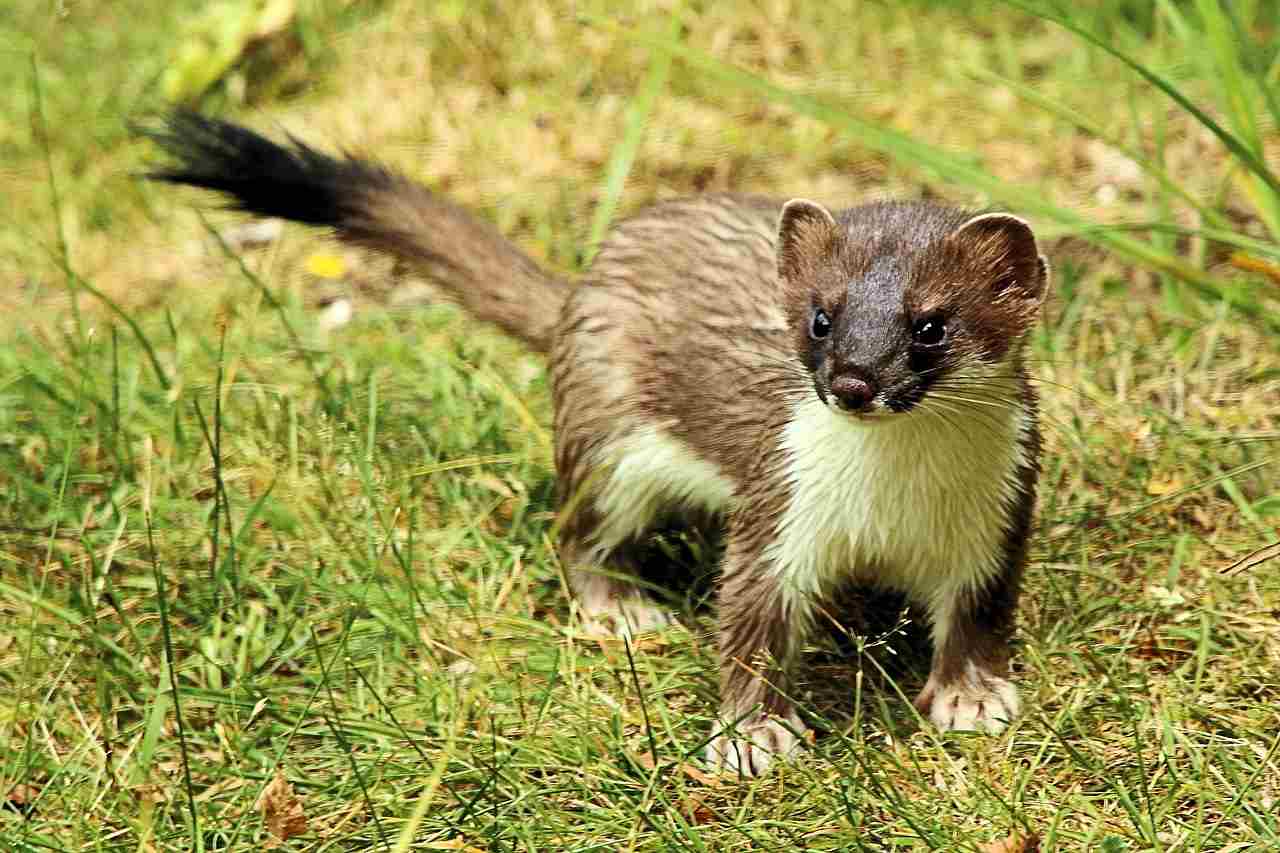
Stoat:
Keen sense of smell and hearing.
Good low-light vision.
Mink:
Well-developed sense of smell, crucial for aquatic hunting.
Good vision both in and out of water.
Comparison:
Both stoats and minks rely on a strong sense of smell for hunting.
Stoats have an advantage in low-light vision, while minks excel in aquatic environments.
Ecological Implications:
Stoats use their senses for hunting in various terrestrial habitats.
Minks’ senses are adapted for both terrestrial and aquatic prey detection.
11. Overall Physical Capacity
Stoat:
Agile and adaptable, suitable for various habitats.
Well-suited for terrestrial hunting.
Mink:
Versatile, excelling in both terrestrial and aquatic environments.
Strong swimming ability for aquatic prey capture.
Comparison:
Stoats are specialized for terrestrial hunting.
Minks exhibit a broader range of physical capacities, adapting to both land and water.
Ecological Implications:
Stoats thrive in diverse terrestrial ecosystems.
Minks are well-equipped for hunting in both terrestrial and aquatic habitats.
12. Habitat Preference(s)
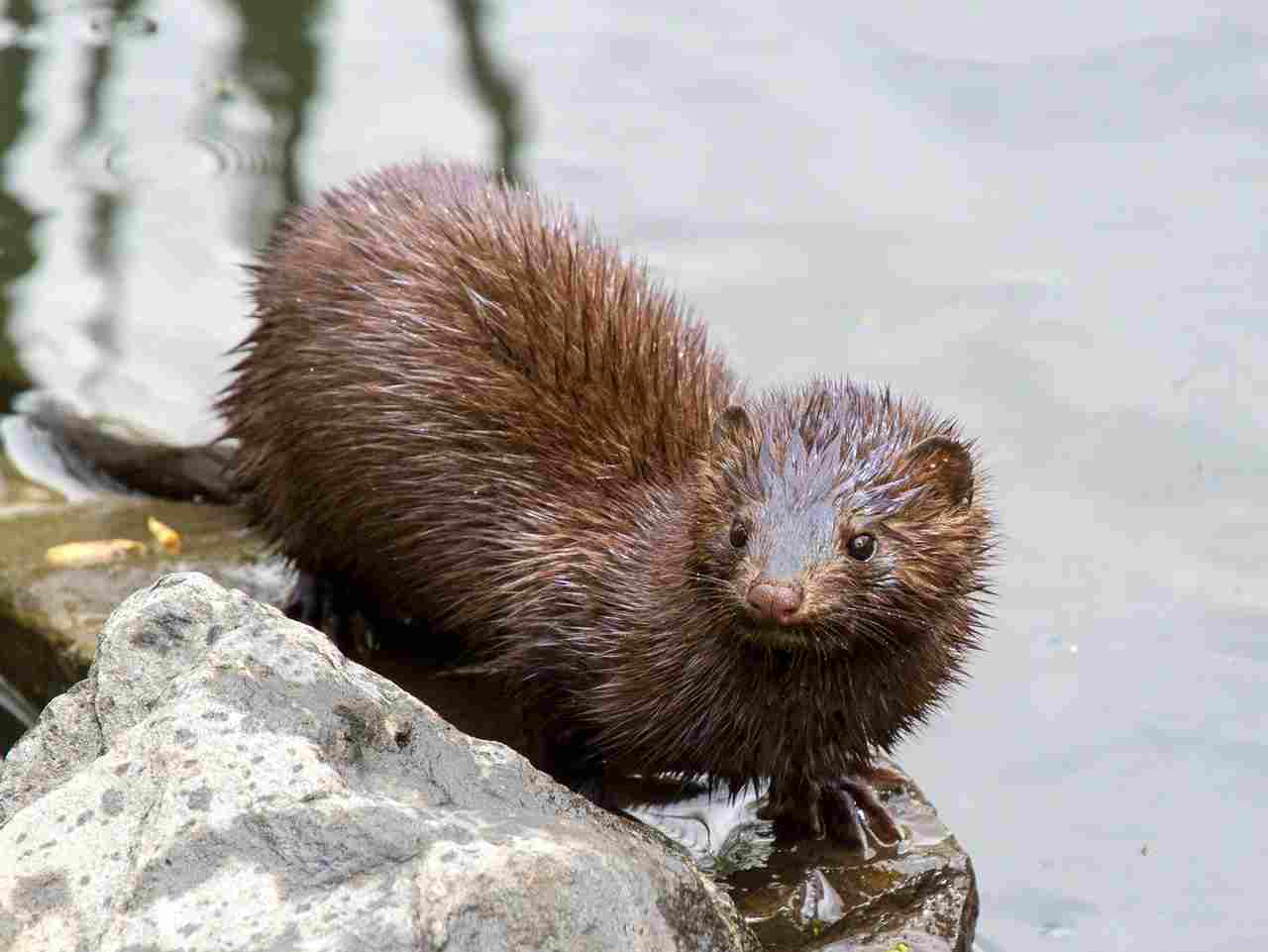
Stoat:
Found in a variety of habitats, including forests, grasslands, and tundra.
Mink:
Commonly found near water bodies such as rivers, lakes, and marshes.
Comparison:
Stoats are adaptable and can inhabit a wide range of ecosystems.
Minks are closely associated with aquatic environments.
Ecological Implications:
Stoats’ habitat flexibility allows them to exploit different prey and resources.
Minks’ preference for aquatic habitats aligns with their specialized hunting techniques.
13. Tracks
Stoat:
Small tracks with distinct claw marks, reflecting their agile movement.
Mink:
Paw prints similar to other mustelids, often observed near water sources.
Comparison:
Stoat tracks reveal their agility and small body size.
Mink tracks are typical of mustelids, with variations based on habitat.
Ecological Implications:
Stoat tracks indicate their presence in diverse terrestrial environments.
Mink tracks near water sources are indicative of their association with aquatic habitats.
14. Lifespan
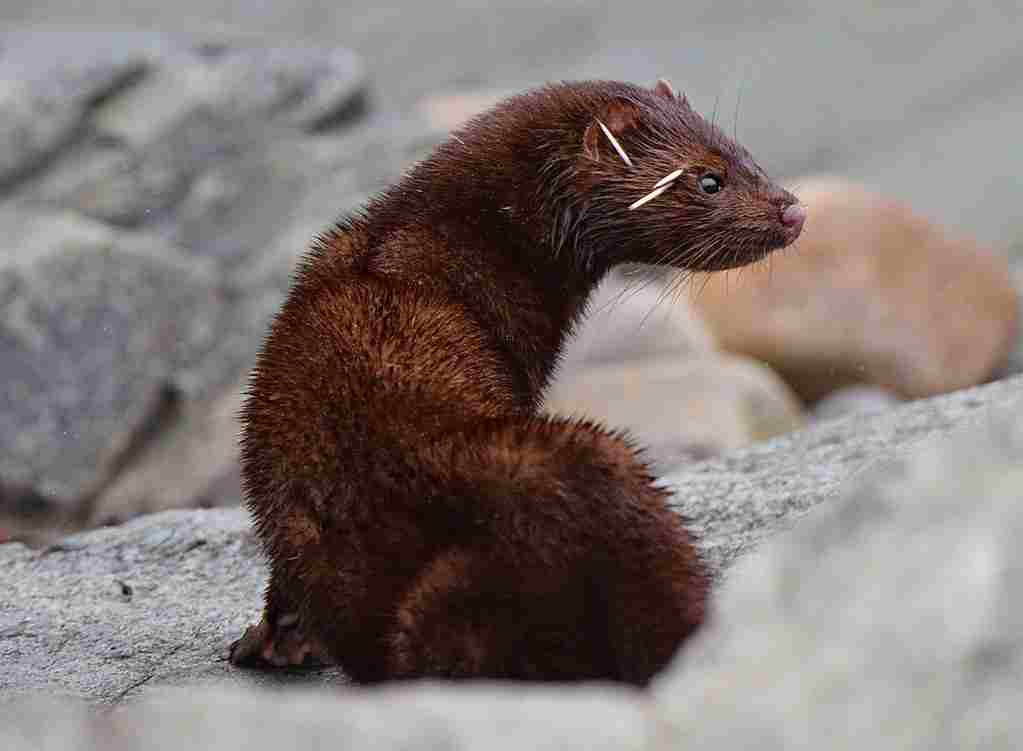
Stoat:
Typically live 1 to 3 years in the wild.
Mink:
Average lifespan ranges from 3 to 10 years in the wild.
Comparison:
Stoats have a relatively short lifespan in the wild.
Minks can live longer, especially in favorable conditions.
Ecological Implications:
Stoats may exhibit higher reproductive rates due to their shorter lifespan.
Minks may have a more extended impact on local ecosystems due to their longer lifespan.
15. Mode of Feeding
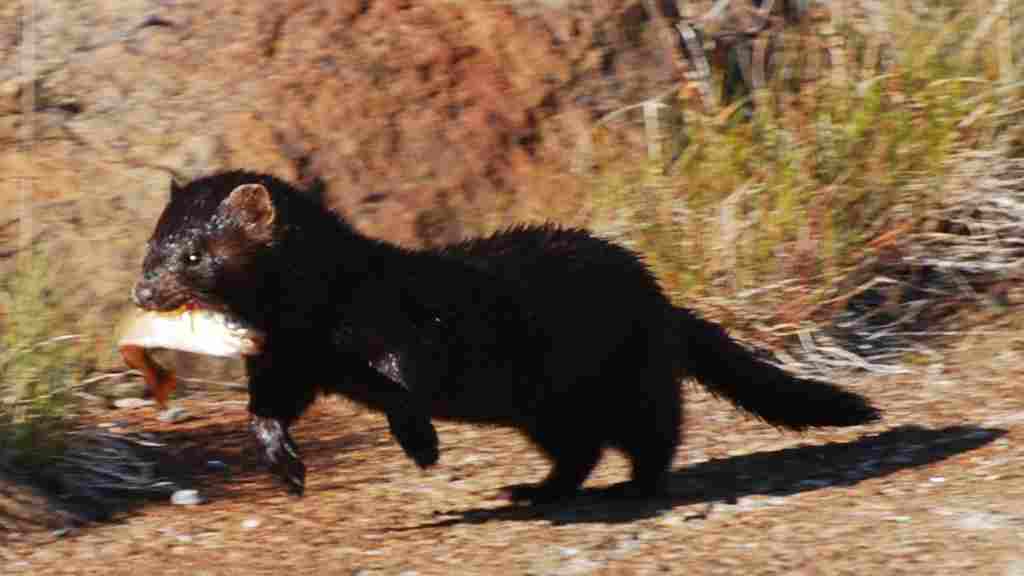
Stoat:
Carnivorous, preying on small mammals, birds, and insects.
Mink:
Carnivorous, with a diet including fish, amphibians, and small mammals.
Comparison:
Both stoats and minks are carnivorous, focusing on different types of prey.
Stoats primarily hunt terrestrial prey, while minks specialize in aquatic prey.
Ecological Implications:
Stoats play a role in controlling small mammal populations in various ecosystems.
Minks contribute to the balance of aquatic ecosystems by controlling fish and amphibian populations.
16. Intelligence
Stoat:
Known for their clever hunting strategies and adaptability.
Mink:
Display problem-solving skills, especially in hunting aquatic prey.
Comparison:
Both stoats and minks exhibit intelligence in their respective hunting behaviors.
Stoats showcase adaptability, while minks display specialized intelligence for aquatic hunting.
Ecological Implications:
Stoats’ intelligence aids in successfully hunting a variety of prey in different environments.
Minks’ problem-solving skills are crucial for navigating aquatic environments and capturing prey.
17. Social Behavior
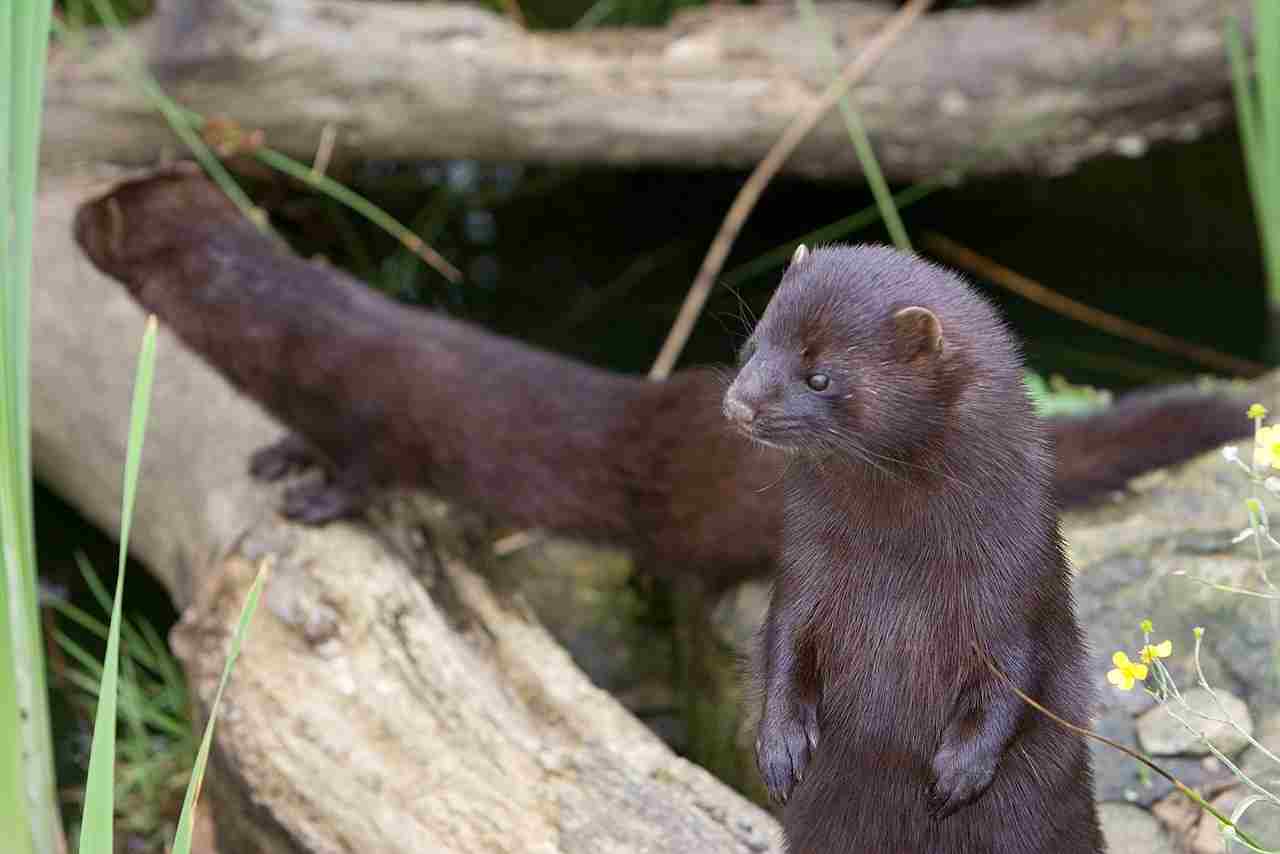
Stoat:
Generally solitary, with limited social interactions outside the breeding season.
Mink:
Solitary but may share territories with overlapping home ranges.
Comparison:
Both stoats and minks are predominantly solitary animals.
Minks may tolerate overlapping territories more than stoats.
Ecological Implications:
Stoats’ solitary nature may reduce competition for resources within their habitat.
Minks’ overlapping territories suggest potential interactions and competition, especially in aquatic environments.
18. Mode of Reproduction
Stoat:
Polygamous mating system with a short gestation period.
Kits are born blind and dependent on the mother.
Mink:
Polygamous mating, similar to stoats, with a short gestation period. are born in litters, blind and dependent on the mother.
Comparison:
Both stoats and minks follow a polygamous mating system with short gestation.
Kits of both species are born blind and rely on maternal care.
Ecological Implications:
Short gestation allows for quick reproduction, important for population dynamics.
Dependence of offspring on maternal care emphasizes the importance of suitable habitats.
19. Parental Behavior
Stoat:
Mother provides care and protection to the kits.
Kits learn hunting skills from the mother.
Mink:
Similar maternal care, with the mother teaching hunting skills.
Kits may stay with the mother for several months before becoming independent.
Comparison:
Both stoats and minks exhibit maternal care, including teaching hunting skills.
Minks may have a longer period of parental care before offspring become independent.
Ecological Implications:
Maternal teaching of hunting skills is crucial for the survival and success of offspring.
Prolonged parental care in minks may contribute to the development of more skilled hunters.
20. Proximity to Human-Inhabited Areas
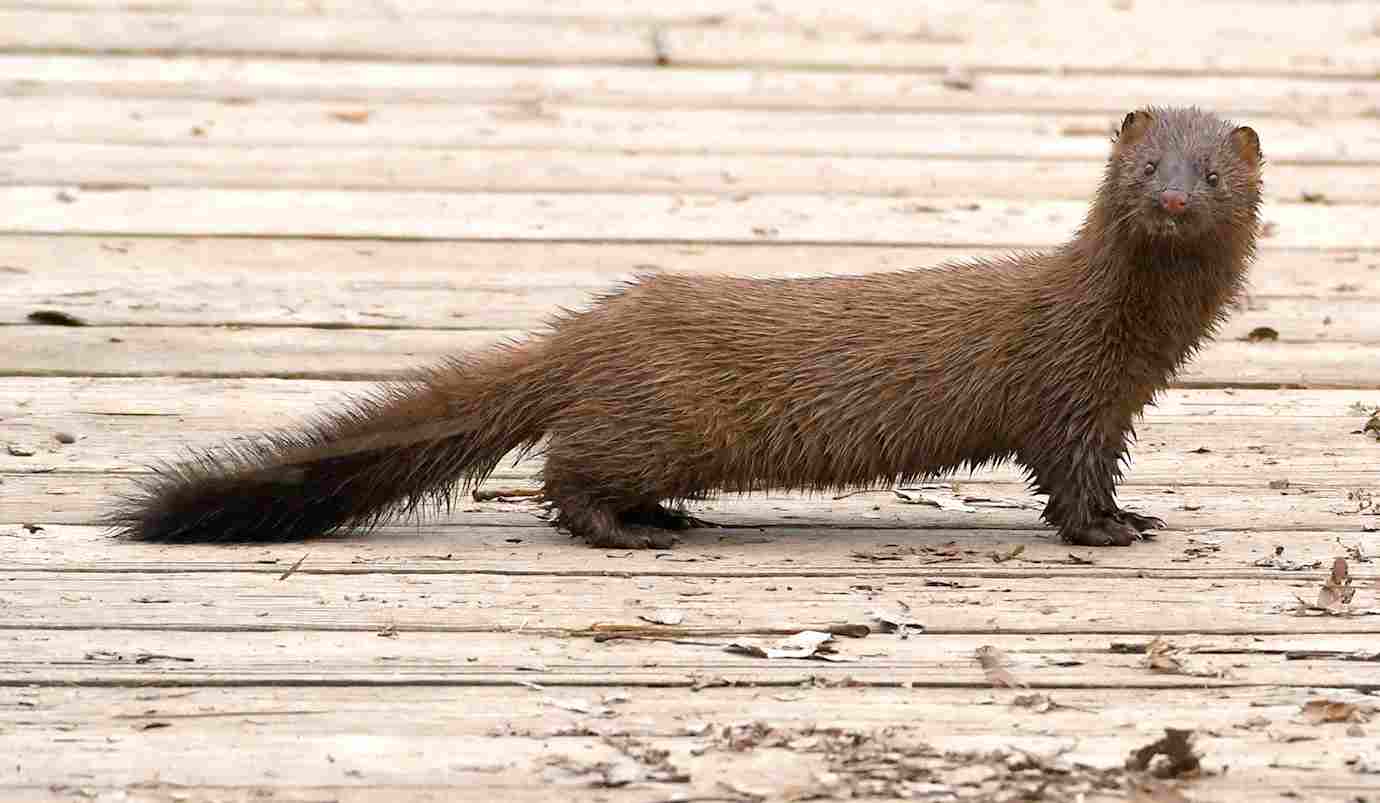
Stoat:
Can adapt to human-altered landscapes but prefer natural habitats.
Mink:
May be found in close proximity to human settlements, especially near water bodies.
Comparison:
Stoats show adaptability but have a preference for natural environments.
Minks may be more tolerant of human presence, especially where aquatic resources are abundant.
Ecological Implications:
Stoats’ adaptability may enable them to persist in fragmented natural habitats.
Minks’ proximity to human areas may lead to interactions, especially near water bodies.
21. Behavior Toward Humans
Stoat:
Generally elusive and may avoid direct contact with humans.
Can become more visible in search of food.
Mink:
Can adapt to human presence, especially if water resources are available.
May show curiosity or approach humans in certain situations.
Comparison:
Stoats tend to be more elusive and cautious around humans.
Minks may show more tolerance and adaptability to human activities, especially near water.
Ecological Implications:
Stoats’ elusive behavior may contribute to their survival in natural habitats.
Minks’ adaptability to human presence may increase the likelihood of interactions and potential conflicts, especially near water bodies.
22. Danger Posed to Humans
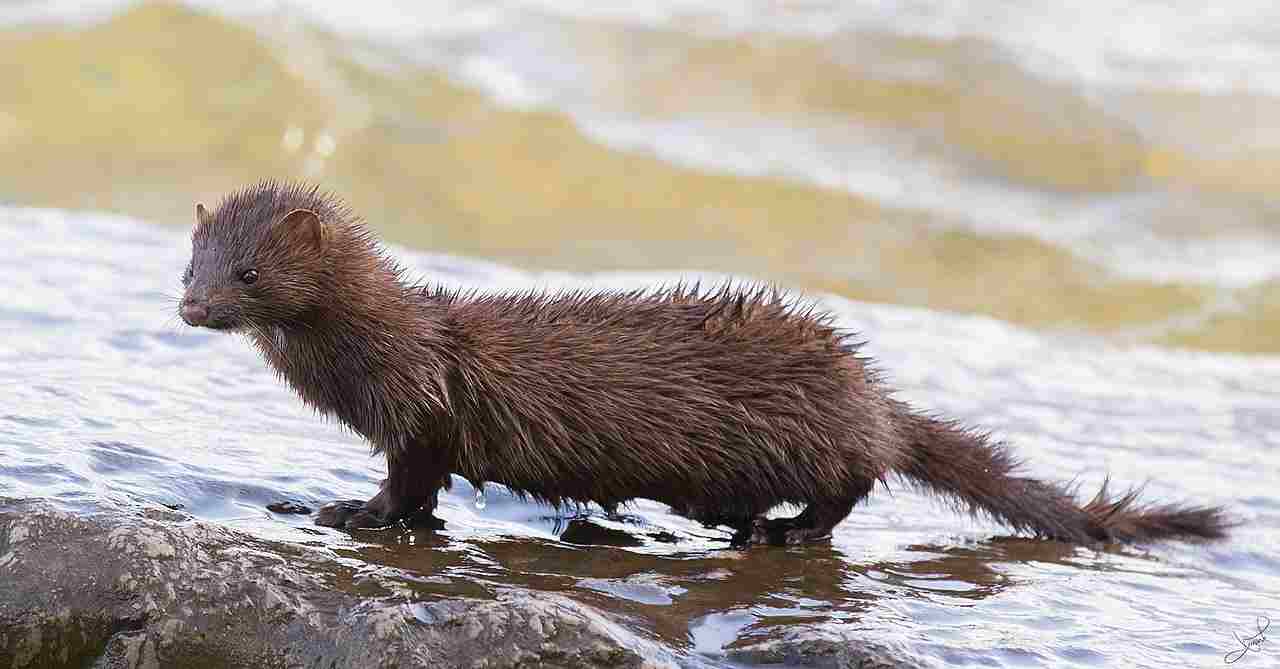
Stoat:
Generally not considered dangerous to humans.
May bite if cornered or threatened but poses minimal risk.
Mink:
Typically not aggressive toward humans.
In rare cases, may bite if feeling threatened, especially in captivity.
Comparison:
Both stoats and minks are not inherently dangerous to humans.
Rare instances of bites may occur if they feel threatened.
Ecological Implications:
Minimal danger from stoats and minks encourages coexistence in natural habitats.
Understanding and respecting their behavior helps minimize potential risks.
23. Associated Precautions
Stoat:
Avoiding unnecessary interactions reduces the risk of bites.
Educating people on stoat behavior can promote coexistence.
Mink:
Caution is advised, especially when encountering minks near water.
Avoiding feeding or provoking them reduces potential conflicts.
Comparison:
Similar precautions apply to both stoats and minks, emphasizing avoidance of unnecessary interactions.
Education on their behavior is essential for promoting safe coexistence.
Ecological Implications:
Responsible human behavior contributes to the safety of both wildlife and people.
Promoting awareness helps mitigate potential conflicts between humans and these species.
24. Conservation Status
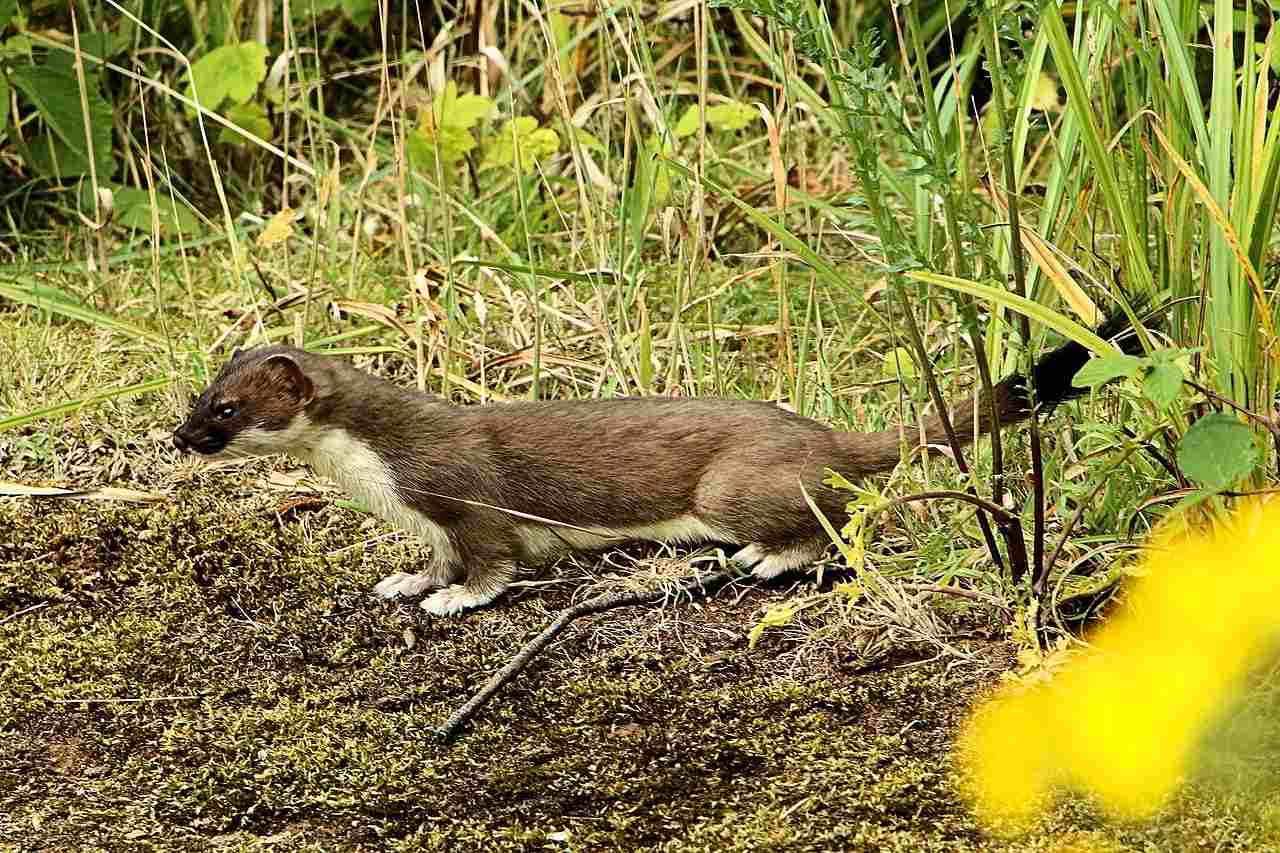
Stoat:
Generally, the stoat is not considered threatened.
Conservation status varies regionally, with some populations facing localized threats.
Mink:
American mink is listed as Least Concern.
However, there may be concerns in specific regions due to the escape of farmed minks impacting native wildlife.
Comparison:
Stoats and minks have different conservation statuses, influenced by regional factors.
Stoats may face localized threats, while minks, as a species, are considered of Least Concern.
Ecological Implications:
Conservation efforts may be region-specific, addressing localized threats to stoat populations.
Monitoring escaped farmed minks is crucial to prevent potential ecological impacts on native species.
Summary of Comparison
Taxonomy:
Stoat: Mustela erminea
Mink: Neovison vison
Appearance:
Stoats: Color-changing fur, black-tipped tail.
Minks: Thick, glossy fur, slightly flattened head.
Size:
Stoats: 17-33 cm (body)
Minks: 32-71 cm (body)
Weight:
Stoats: 85-370 grams
Minks: 450-1,580 grams
Bite Force (PSI):
Stoats: Limited information
Minks: Estimated around 400 PSI
Physical Offensive Advantages:
Stoats: Speed, agility, sharp claws, and teeth.
Minks: Strong bite force, swimming ability.
Physical Defensive Advantages:
Stoats: Agility, musky odor emission.
Minks: Claws, teeth, musky odor when threatened.
Speed:
Stoats: Up to 40 km/h (25 mph)
Minks: Land speed not well-documented, agile swimmers.
Agility:
Stoats: Highly agile on land.
Minks: Agile both on land and in water.
Senses:
Stoats: Keen sense of smell, hearing, good low-light vision.
Minks: Well-developed sense of smell, good vision in and out of water.
Overall Physical Capacity:
Stoats: Terrestrial agility and adaptability.
Minks: Versatility in both terrestrial and aquatic environments.
Habitat Preference(s):
Stoats: Diverse habitats including forests, grasslands, tundra.
Minks: Near water bodies such as rivers, lakes, marshes.
Tracks:
Stoats: Small tracks with distinct claw marks.
Minks: Paw prints near water sources.
Lifespan:
Stoats: 1-3 years
Minks: 3-10 years
Mode of Feeding:
Stoats: Carnivorous, preying on small mammals, birds, insects.
Minks: Carnivorous, with a diet including fish, amphibians, small mammals.
Intelligence:
Stoats: Clever hunting strategies, adaptability.
Minks: Problem-solving skills, especially in aquatic hunting.
Social Behavior:
Stoats: Generally solitary.
Minks: Solitary but may share territories.
Mode of Reproduction:
Stoats: Polygamous mating, short gestation.
Minks: Polygamous mating, short gestation.
Parental Behavior:
Stoats: Maternal care, teaching hunting skills.
Minks: Similar maternal care, prolonged period before independence.
Proximity to Human-Inhabited Areas:
Stoats: Adaptable but prefer natural habitats.
Minks: May be found close to human settlements, especially near water.
Behavior Toward Humans:
Stoats: Generally elusive, may approach when searching for food.
Minks: Tolerant, may approach in certain situations, especially near water.
Danger Posed to Humans:
Both generally not considered dangerous, rare instances of bites if threatened.
Associated Precautions:
Caution advised, avoiding unnecessary interactions, promoting awareness.
Conservation Status:
Stoats: Conservation status varies regionally.
Minks: Listed as Least Concern, potential concerns with escaped farmed individuals.
Conclusion
I). Similarities:
Both stoats and minks belong to the family Mustelidae and share similarities in their ecological roles as carnivorous predators.
They exhibit polygamous mating systems, short gestation periods, and provide maternal care to their offspring.
II). Differences:
Stoats and minks differ in habitat preferences, with stoats adapting to a broader range of terrestrial environments, while minks are closely associated with aquatic habitats.
Conservation statuses vary, with stoats facing localized threats, and minks being considered of Least Concern but with potential concerns due to escaped farmed individuals.
